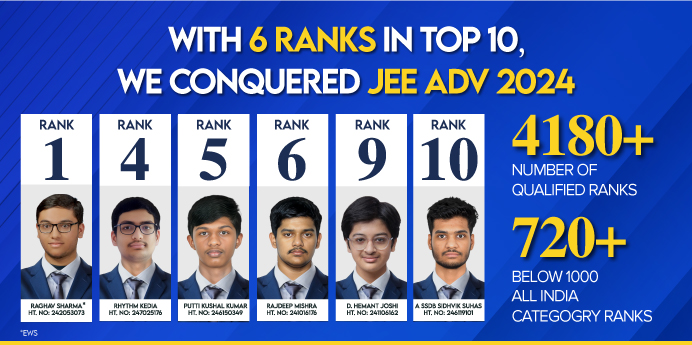










Courses

By Brijesh Sharma
|
Updated on 16 Oct 2025, 18:01 IST
The topic The d and f Block Elements plays a very vital role in Class 12 Chemistry MCQ D and F Block Elements section of class 12 board exams. This class 12 chemistry chapter deals with transition and inner transition elements which form the base of coordination chemistry and metallurgy. Solving MCQs for CBSE Class 12 Chemistry Chapter 4 – The d and f Block Elements helps students to revise concepts like oxidation states, colour of compounds, magnetic behavior and electronic configuration. These d and f block mcq class 12 questions are designed as per the latest CBSE Class 12 Chemistry Syllabus and include variety of easy to tough level questions.
Practicing MCQ on d and f block elements class 12 improves understanding and also boost confidence for CBSE board and entrance exams. Students should also refer NCERT Solutions for Class 12 Chemistry for clear concept before attempting d and f block elements class 12 important questions mcqs test.
Ques: Which groups of the periodic table contain the d-block elements?
A. Groups 1–2
B. Groups 3–12
C. Groups 13–18
D. Groups 1–18
Ans: B · d-Block spans groups 3–12 where (n−1)d orbitals are being filled.

Ques: Which are not regarded as transition metals by IUPAC?
A. Cu

JEE

NEET

Foundation JEE

Foundation NEET

CBSE
B. Sc
C. Zn, Cd, Hg
D. Fe
Ans: C · They have d10 in common oxidation states, so no incomplete d subshell.

Ques: What is the typical shape of a d orbital?
A. Spherical
B. Dumbbell
C. Cloverleaf (double dumbbell)
D. Linear
Ans: C · Four d orbitals are cloverleaf; dz² is lobe with a torus.
Ques: Lanthanoid contraction is mainly due to increasing…
A. Atomic number
B. Effective nuclear charge
C. Atomic radius
D. Valence electrons
Ans: B · Poor shielding by 4f electrons increases Zeff, shrinking radii.
Ques: Which ion is diamagnetic?
A. Co2+
B. Ni2+
C. Cu2+
D. Zn2+
Ans: D · Zn2+ has 3d10 with all electrons paired.
Ques: Which transition metal is the catalyst in the Haber process?
A. W
B. Mo
C. Cr
D. Fe (with promoters)
Ans: D · Porous iron is the main catalyst; Al2O3/K2O/Mo act as promoters.
Ques: Which is the first man-made element?
A. Sc
B. Os
C. Tc
D. Zr
Ans: C · Technetium (43) has no stable isotopes and was first produced artificially.
Ques: In neutral solution, 1 mol of MnO₄²⁻ disproportionates to:
A. (2/3) mol MnO₄⁻ + (1/3) mol MnO₂
B. (1/3) mol MnO₄⁻ + (2/3) mol MnO₂
C. (1/3) mol Mn₂O₇ + (1/3) mol MnO₂
D. (2/3) mol Mn₂O₇ + (1/3) mol MnO₂
Ans: A · Mn(+6) disproportionates to Mn(+7) and Mn(+4) in neutral medium.
Ques: Among Cr, Mn, Fe, Co, which has the most negative standard reduction potential (strongest reducing in metal state)?
A. Fe
B. Mn
C. Cr
D. Co
Ans: C · Cr shows very negative E° for Cr3+/Cr or Cr2+/Cr; strong tendency to oxidize.
Ques: Which ion has the maximum number of unpaired electrons?
A. V3+
B. Fe2+
C. Ti3+
D. Mn2+
Ans: D · Mn2+ is 3d5 → five unpaired electrons (high spin).
Ques: The colour of many transition-metal ions arises due to:
A. d → s transitions
B. s → s transitions
C. s → d transitions
D. d → d transitions
Ans: D · Crystal-field-induced d–d transitions absorb visible light.
Ques: Oxidation state of Mn in KMnO₄?
A. +2
B. +4
C. +6
D. +7
Ans: D · K = +1 and O = −2 ×4 ⇒ Mn = +7.
Ques: Zr and Hf have similar radii mainly because of:
A. Diagonal relationship
B. Lanthanoid contraction
C. Actinoid contraction
D. Same period
Ans: B · Poor 4f shielding contracts the lanthanoid series, affecting Hf.
Ques: In alkaline medium, MnO₄⁻ is typically reduced to:
A. MnO₄²⁻
B. MnO₂
C. Mn₂O₃
D. MnO
Ans: B · Permanganate reduces to Mn(+4) oxide in basic media.
Ques: Mohr’s salt is:
A. Normal salt
B. Acid salt
C. Basic salt
D. Double salt
Ans: D · FeSO₄·(NH₄)₂SO₄·6H₂O is a double salt.
Ques: Which pair has the same d-electron count (common oxidation states)?
A. Cu2+, Cr2+
B. Fe3+, Mn2+
C. Co3+, Ni3+
D. Sc3+, Cr3+
Ans: B · Both are d5.
Ques: Which ion has configuration [Ar] 3d⁶?
A. Ni3+
B. Mn3+
C. Fe3+
D. Co3+
Ans: D · Co (27) → Co3+ has 24 e⁻ → 3d⁶.
Ques: Transition elements readily form alloys mainly because:
A. Same atomic number
B. Same configuration
C. Similar atomic radii
D. Same density
Ans: C · Comparable sizes allow substitution in the lattice.
Ques: Variable oxidation states of transition metals arise due to loss of:
A. Only ns electrons
B. (n−1)d and ns electrons
C. Only np electrons
D. None
Ans: B · Both s and d electrons can participate in bonding.
Ques: Which statement about lanthanides is false?
A. +3 is most common
B. They show lanthanoid contraction
C. Separable by ion-exchange
D. Ionic radii increase with Z
Ans: D · Radii decrease slightly as Z increases.
Ques: Chief ore of mercury is:
A. Pyrolusite
B. Bauxite
C. Galena
D. Cinnabar
Ans: D · HgS is cinnabar.
Ques: Gun metal is an alloy of:
A. Cu + Zn
B. Cu + Sn + Zn
C. Cu + Sn
D. Zn + Sn
Ans: B · Typically Cu ~88%, Sn ~10%, Zn ~2%.
Ques: Which is not an ore of iron?
A. Limonite
B. Casiterite
C. Magnetite
D. Hematite
Ans: B · Casiterite is SnO₂ (tin ore).
Ques: Oxidation state of Au in AuCl₄⁻:
A. +1
B. +3
C. +2
D. −1
Ans: B · Cl contributes −4 overall; ion is −1 ⇒ Au is +3.
Ques: Which actinoids are used as nuclear fuels?
A. Th
B. U
C. Pu
D. All of these
Ans: D · Thorium, uranium, plutonium are all fuel materials.
Ques: Which inner transition series sits between groups 3 and 4 in period 6?
A. Lanthanides
B. Actinides
C. Both
D. None
Ans: A · Lanthanoids fit below La position in period 6.
Ques: Which has the highest accessible oxidation state among these?
A. V
B. Mo
C. W
D. Cr
Ans: C · W commonly reaches +6; very stable in oxo species.
Ques: Which is not a characteristic of transition metals?
A. Variable oxidation states
B. Colored compounds
C. Complex formation
D. Universal natural radioactivity
Ans: D · Most transition elements are not naturally radioactive.
Ques: The most characteristic oxidation state of lanthanides is:
A. +1
B. +2
C. +3
D. +4
Ans: C · +3 dominates due to stable 4f configuration after ionization.
Ques: Which pair generally shows only one common oxidation state?
A. Sc and Zn
B. Zn and Cu
C. Cu and Ag
D. Zn and Au
Ans: A · Sc is mainly +3; Zn is mainly +2.
Ques: Glass becomes deep blue when it contains compounds of:
A. Fe(III)
B. Co(II)
C. Cr(III)
D. Ni(II)
Ans: B · Co(II) silicates impart a characteristic deep blue.
Ques: Which of the following are colored compounds?
A. TiCl₃
B. FeCl₃
C. CoCl₂
D. All of these
Ans: D · Each has partially filled d orbitals.
Ques: To extract silver from its amalgam, the vessel should be made of:
A. Cu
B. Fe
C. Ni
D. Zn
Ans: B · Hg does not wet iron; it does amalgamate with Ag, easing separation.
Ques: Colour of copper(II) sulphide, CuS:
A. Blue
B. Black
C. Red
D. Green
Ans: B · CuS is black.
Ques: Which lanthanide commonly shows +2 along with +3?
A. La
B. Pr
C. Ce
D. Eu
Ans: D · Eu²⁺ is stabilized by half-filled 4f7.
Ques: Which block elements are called transition elements?
A. p-block
B. s-block
C. d-block
D. f-block
Ans: C · Transition elements correspond to d-block.
Ques: Which does not belong to the first transition series?
A. Fe
B. Cr
C. Mg
D. Ni
Ans: C · Mg is an s-block element.
Ques: Which elements show anomalous ground-state configurations?
A. Cr
B. Fe
C. Cu
D. Both Cr and Cu
Ans: D · Cr: 3d54s1; Cu: 3d104s1.
Ques: “Green vitriol” is:
A. FeSO₄·7H₂O
B. CuSO₄·5H₂O
C. CaSO₄·2H₂O
D. None
Ans: A · Ferrous sulphate heptahydrate is pale green.
Ques: In dichromate, Cr₂O₇²⁻, the Cr–O bonds are:
A. All equivalent
B. Six equivalent
C. Three types
D. None equivalent
Ans: C · Bridging and terminal oxygens lead to distinct bond types.
Ques: Which statement about transition metals is incorrect?
A. They form complexes
B. They are paramagnetic (often)
C. They show variable oxidation states
D. They are always diamagnetic
Ans: D · Many have unpaired d electrons → paramagnetism.
Ques: Ground-state configuration of chromium (Z=24):
A. …3d⁷4s¹
B. …3d⁵4s¹
C. …3d⁷4s²
D. …3d⁶4s²
Ans: B · Half-filled d-subshell stabilizes 3d⁵4s¹.
Ques: Electronic configuration of Fe (neutral):
A. [Ar] 3d⁴
B. [Ar] 3d⁶4s²
C. [Ar] 3d²
D. [Ar] 3d²4s²
Ans: B · Iron is [Ar] 3d⁶ 4s².
Ques: Radioisotope used widely in cancer radiotherapy:
A. Na-24
B. C-14
C. U-235
D. Co-60
Ans: D · Cobalt-60 emits therapeutic γ-rays.
Ques: Most common oxidation state for actinides:
A. +2
B. +3
C. +4
D. +5 or higher
Ans: B · +3 is prevalent, though higher states occur.
Ques: Which property is not typical for transition metals?
A. High enthalpy of atomization
B. Catalytic activity
C. Always diamagnetic
D. Interstitial compound formation
Ans: C · Many are paramagnetic due to unpaired d electrons.
Ques: Which is not characteristic of d-block elements?
A. Variable oxidation states
B. Catalytic properties
C. Colored compounds
D. Single fixed oxidation state for all
Ans: D · Most d-block elements show multiple oxidation states.
Ques: Which metal is liquid near room temperature and has very low melting point?
A. Cs
B. Na
C. Hg
D. Sn
Ans: C · Mercury is liquid at room temperature.
Ques: Which element is among the densest known?
A. Pt
B. Os
C. Pd
D. Au
Ans: B · Osmium and iridium top density tables.
Ques: General reason for colour, catalysis, and magnetism in transition metals:
A. Filled d subshells
B. Partially filled d subshells
C. Filled p subshells
D. Empty s subshells
Ans: B · Partially filled d orbitals enable d–d transitions, variable valence, and unpaired spins.
No courses found
The chapter mainly covers transition and inner transition elements, their properties, oxidation states, magnetic behavior, and electronic configurations.
Practicing MCQs helps students understand concepts deeply, improves accuracy, and boosts time management skills for board and entrance exams.
Yes, all the questions are prepared as per the updated CBSE Class 12 Chemistry Syllabus and follow NCERT guidelines.
Students can refer to the official NCERT book and solutions available on Infinity Learn educational platform for detailed explanations and solved examples.
Mostly conceptual and reasoning-based MCQs are asked, especially on topics like variable oxidation states, colour, and complex formation.